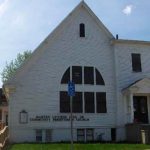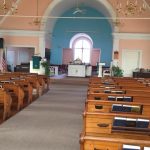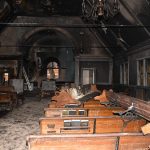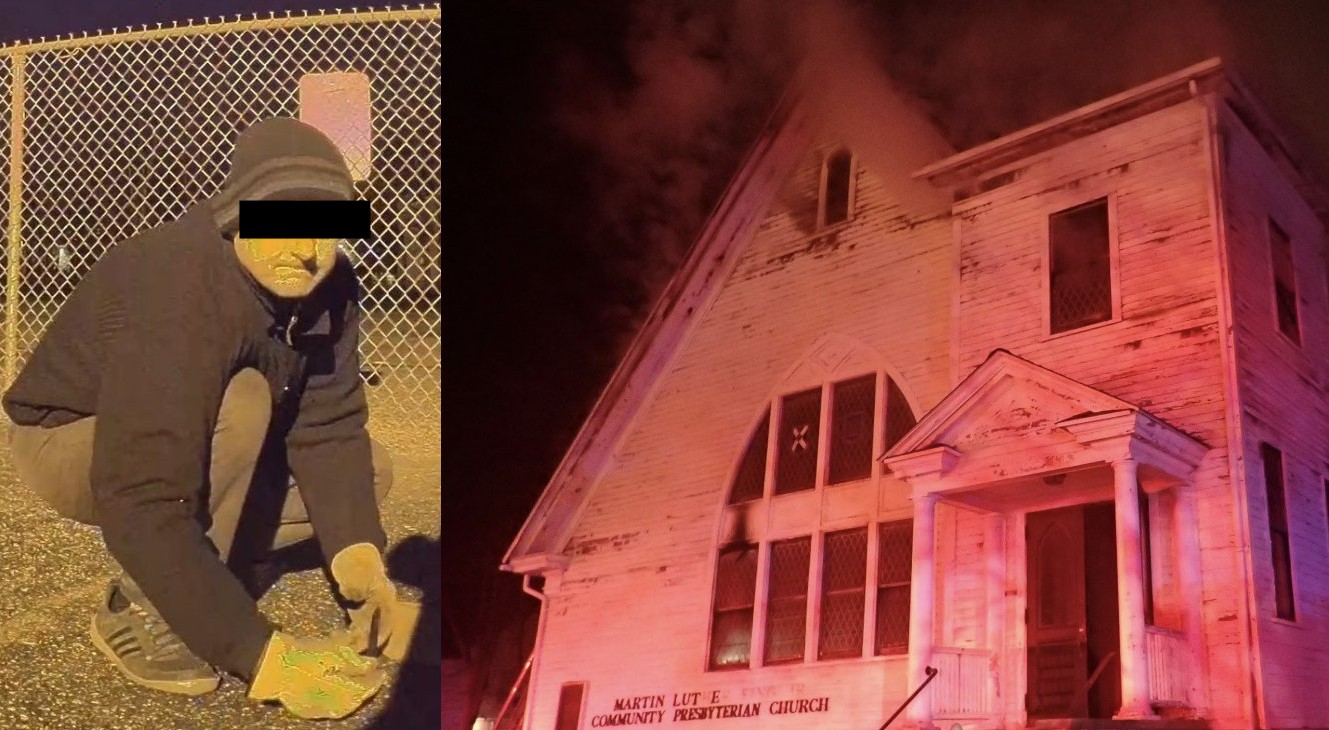
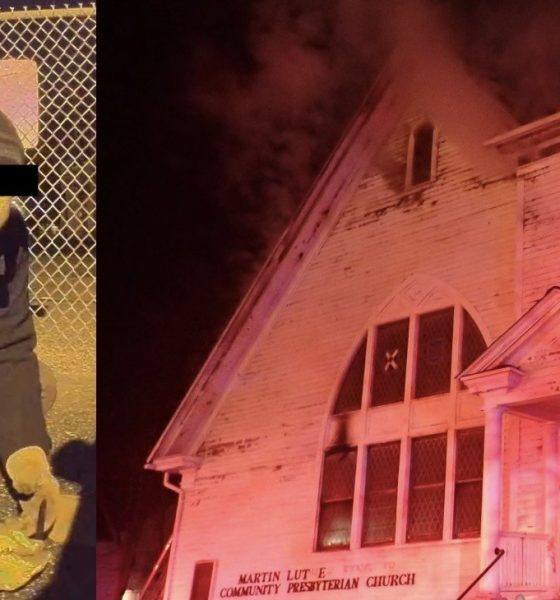
News
FBI taps Tesla Sentry Mode footage to help catch man behind alleged hate crimes
It appears that some members of the Federal Bureau of Investigation (FBI) are now becoming familiar with Tesla’s built-in security features like Sentry Mode, which allows vehicles to record videos from their cameras to actively monitor their surroundings. This was undoubtedly the case in an incident back in December, which involved slashed tires, arson, and what appears to be a racially motivated attack against a church.
In an affidavit dated April 15, 2021, FBI Special Agent Casey Anderson outlined the events that led to an incident that resulted in the destruction of the Martin Luther King, Jr. Community Presbyterian Church in Springfield, Massachusetts. The suspect behind the incident, 44-year-old Maine resident Dushko Vulchev, is a naturalized United States citizen from Bulgaria. As per the FBI agent’s affidavit, Vulchev had previously run afoul of the law prior to his apparent arson in December, having been convicted of threatening a foreign official in 2015 and a series of offenses such as domestic violence assault in 2017.
The Martin Luther King, Jr. Community Presbyterian Church in Springfield, Massachusetts before the fires. (Credit: CourtListener)
The Attacks
In December 2020, the MLK Church experienced a series of fires, one of which eventually destroyed the whole building. The first of these fires were reported on December 13, when the fire department was deployed to extinguish a blaze behind the church. On the same day, a vehicle had its tires slashed two miles away from the church. The next day, a BMW about 1.5 miles away from the MLK church and a Tesla parked less than a mile away from the church had their tires slashed. In the case of the Tesla, its owner found that one of the vehicle’s wheels was also missing.
Another fire behind the Martin Luther King, Jr. Community Presbyterian Church was set on December 15, 2020, at around 6:32 p.m. The Springfield Police Department (SPD) Arson and Bomb Squad investigated the fire and promptly determined that the blaze had been intentionally ignited. Interestingly enough, another fire in the church was reported at 11:03 p.m. that same day. Upon investigation, the SFD reported that the blaze had been “intentionally set to eventually involve the structure” of the church.
Things essentially calmed down until December 27, when a Dodge Charger had its tires slashed just 400-500 feet away from the MLK Church. At around 5:06 a.m. the next day, the American International College campus police reported a new blaze at the MLK Church. This time, the fire was started just outside the basement side door, where it burned through and up through the church’s main floor. The blaze essentially destroyed the church, and upon investigation, the SPD concluded that the fire was intentional.
Photos of the MLK Church during the December 28, 2020 blaze. (Credit: CourtListener)
The Investigation
Investigators working on the case were able to obtain several video footage relevant to the case. In the first tire slashing incident on December 13, footage from the City of Springfield recorded a gray Chevy Cruze pulling up into the same parking lot as the vehicle that was attacked. The car was found to have been registered to the suspect, Vulchev. City video footage captured the suspect crossing the street in the direction of the MLK Community Center later that day. The gray Chevy Cruze was also recorded circling the MLK Church.
Vulchev’s Chevy Cruze was sighted by city video footage once more the next day, when the BMW tire slashing incident transpired. As per the FBI agent’s affidavit, a while male matching Vulchev’s height, gait, and clothing, was spotted approaching the BMW. Later that day, a Tesla became the next victim of the suspect’s tire slashing tendencies. But this time around, the special agent didn’t just have a faraway shot of a man approaching a vehicle. This time around, authorities were able to get a clear shot of Vulchev as he was slashing and stealing the Tesla’s tires and stealing a wheel, thanks to Sentry Mode. Tesla’s built-in cameras even captured the suspect putting the stolen goods inside his trunk.
Special Agent Casey Anderson related his experience with Teslas and their built-in cameras in his affidavit. “Based on my training and experience and this investigation, I am aware that the Tesla referenced above is equipped with cameras at various points around the body. ATF Special Agent Marc Maurino (“SA Maurino”) and I have reviewed video footage retrieved from the Tesla showing an individual that I can identify as Vulchev, based on my observation of Vulchev during the Vulchev PPD Interview.
“The video footage from the Tesla shows Vulchev at a close distance crouching near the Tesla and using a tire iron to remove the wheels. Additional Tesla video footage captured Vulchev removing one of the Tesla’s wheels and placing it in the trunk of Vulchev’s car. Vulchev’s face is clearly visible in the video. Vulchev was wearing grey pants and a dark-colored sweatshirt, Adidas three-stripe sneakers, a black hat with two grey stripes, and light-colored work gloves, the agent noted in his affidavit.
Vulchev and his vehicle were spotted around the MLK Church fires, as well as subsequent tire slashing incidents.
The MLK Church after the December 28, 2020 fire. (Credit: CourtListener)
The Arrest
On December 30, 2020, a complaint about a vehicle driving erratically was reported to authorities. When provided with the license plate of the vehicle in question, it was determined that the car was Vulchev’s. Police stopped the suspect’s vehicle on suspicion of erratic driving and possible links to the multiple tire slashing incidents. Since they were aware of the ongoing federal investigation into the fires against MLK Church, local authorities promptly contacted FBI Supervisory Special Agent of the Springfield Resident Agency Matthew Fontaine.
Special Agent Fontaine arrived at the scene of the stop, and upon initial investigation, the FBI agent noted that the suspect may have been living in his car for some time. The FBI agent spoke with the suspect for about eight minutes outside, and immediately, Fontaine noted that Vulchev was wearing the sneakers that were captured clearly by Tesla’s Sentry Mode. PPD officers initially released the suspect, though he was arrested the day after over his links to the multiple tire slashing incidents and the Martin Luther King, Jr. Community Presbyterian Church fires.
On January 4, 2021, the FBI and ATF conducted a search of Vulchev’s vehicle, where they found a computer, a hard drive, and several USB storage devices. A search of the computer revealed Vulchev’s shocking racially charged stance against non-white people. This was seen in messages to an ex-girlfriend—who currently has a lifetime protective order against Vulchev—which featured numerous slurs against Muslims and blacks. Vulchev’s apparent hate against non-whites was notable, as seen in a message to his ex-girlfriend where he was complaining about the race of ABC’s The Bachelorette. A search of the suspect’s phone revealed photos of several notable items, such as a firearm, an image of Adolf Hitler in an Adidas tracksuit, and a “White Lives Matter” mural, as well.
With these in mind, FBI Special Agent Casey Anderson noted that there is probable cause to believe that Vulchev committed damage to religious property, which is in violation of 18 USC §§ 247(c) and (d)(3), and the use of fire to commit a federal felony, which is in violation of USC § 844(h)(1). As per a press release from the US Department of Justice, Vulchev is currently in state custody and is due to make an initial appearance in federal court in Springfield at a later date.
FBI Special Agent Casey Anderson’s complete affidavit could be accessed below.
gov.uscourts.mad.233009.2.1_1 by Simon Alvarez on Scribd
Don’t hesitate to contact us for news tips. Just send a message to tips@teslarati.com to give us a heads up.

Elon Musk
Starlink passes 9 million active customers just weeks after hitting 8 million
The milestone highlights the accelerating growth of Starlink, which has now been adding over 20,000 new users per day.

SpaceX’s Starlink satellite internet service has continued its rapid global expansion, surpassing 9 million active customers just weeks after crossing the 8 million mark.
The milestone highlights the accelerating growth of Starlink, which has now been adding over 20,000 new users per day.
9 million customers
In a post on X, SpaceX stated that Starlink now serves over 9 million active users across 155 countries, territories, and markets. The company reached 8 million customers in early November, meaning it added roughly 1 million subscribers in under seven weeks, or about 21,275 new users on average per day.
“Starlink is connecting more than 9M active customers with high-speed internet across 155 countries, territories, and many other markets,” Starlink wrote in a post on its official X account. SpaceX President Gwynne Shotwell also celebrated the milestone on X. “A huge thank you to all of our customers and congrats to the Starlink team for such an incredible product,” she wrote.
That growth rate reflects both rising demand for broadband in underserved regions and Starlink’s expanding satellite constellation, which now includes more than 9,000 low-Earth-orbit satellites designed to deliver high-speed, low-latency internet worldwide.
Starlink’s momentum
Starlink’s momentum has been building up. SpaceX reported 4.6 million Starlink customers in December 2024, followed by 7 million by August 2025, and 8 million customers in November. Independent data also suggests Starlink usage is rising sharply, with Cloudflare reporting that global web traffic from Starlink users more than doubled in 2025, as noted in an Insider report.
Starlink’s momentum is increasingly tied to SpaceX’s broader financial outlook. Elon Musk has said the satellite network is “by far” the company’s largest revenue driver, and reports suggest SpaceX may be positioning itself for an initial public offering as soon as next year, with valuations estimated as high as $1.5 trillion. Musk has also suggested in the past that Starlink could have its own IPO in the future.
News
NVIDIA Director of Robotics: Tesla FSD v14 is the first AI to pass the “Physical Turing Test”
After testing FSD v14, Fan stated that his experience with FSD felt magical at first, but it soon started to feel like a routine.

NVIDIA Director of Robotics Jim Fan has praised Tesla’s Full Self-Driving (Supervised) v14 as the first AI to pass what he described as a “Physical Turing Test.”
After testing FSD v14, Fan stated that his experience with FSD felt magical at first, but it soon started to feel like a routine. And just like smartphones today, removing it now would “actively hurt.”
Jim Fan’s hands-on FSD v14 impressions
Fan, a leading researcher in embodied AI who is currently solving Physical AI at NVIDIA and spearheading the company’s Project GR00T initiative, noted that he actually was late to the Tesla game. He was, however, one of the first to try out FSD v14.
“I was very late to own a Tesla but among the earliest to try out FSD v14. It’s perhaps the first time I experience an AI that passes the Physical Turing Test: after a long day at work, you press a button, lay back, and couldn’t tell if a neural net or a human drove you home,” Fan wrote in a post on X.
Fan added: “Despite knowing exactly how robot learning works, I still find it magical watching the steering wheel turn by itself. First it feels surreal, next it becomes routine. Then, like the smartphone, taking it away actively hurts. This is how humanity gets rewired and glued to god-like technologies.”
The Physical Turing Test
The original Turing Test was conceived by Alan Turing in 1950, and it was aimed at determining if a machine could exhibit behavior that is equivalent to or indistinguishable from a human. By focusing on text-based conversations, the original Turing Test set a high bar for natural language processing and machine learning.
This test has been passed by today’s large language models. However, the capability to converse in a humanlike manner is a completely different challenge from performing real-world problem-solving or physical interactions. Thus, Fan introduced the Physical Turing Test, which challenges AI systems to demonstrate intelligence through physical actions.
Based on Fan’s comments, Tesla has demonstrated these intelligent physical actions with FSD v14. Elon Musk agreed with the NVIDIA executive, stating in a post on X that with FSD v14, “you can sense the sentience maturing.” Musk also praised Tesla AI, calling it the best “real-world AI” today.
News
Tesla AI team burns the Christmas midnight oil by releasing FSD v14.2.2.1
The update was released just a day after FSD v14.2.2 started rolling out to customers.

Tesla is burning the midnight oil this Christmas, with the Tesla AI team quietly rolling out Full Self-Driving (Supervised) v14.2.2.1 just a day after FSD v14.2.2 started rolling out to customers.
Tesla owner shares insights on FSD v14.2.2.1
Longtime Tesla owner and FSD tester @BLKMDL3 shared some insights following several drives with FSD v14.2.2.1 in rainy Los Angeles conditions with standing water and faded lane lines. He reported zero steering hesitation or stutter, confident lane changes, and maneuvers executed with precision that evoked the performance of Tesla’s driverless Robotaxis in Austin.
Parking performance impressed, with most spots nailed perfectly, including tight, sharp turns, in single attempts without shaky steering. One minor offset happened only due to another vehicle that was parked over the line, which FSD accommodated by a few extra inches. In rain that typically erases road markings, FSD visualized lanes and turn lines better than humans, positioning itself flawlessly when entering new streets as well.
“Took it up a dark, wet, and twisty canyon road up and down the hill tonight and it went very well as to be expected. Stayed centered in the lane, kept speed well and gives a confidence inspiring steering feel where it handles these curvy roads better than the majority of human drivers,” the Tesla owner wrote in a post on X.
Tesla’s FSD v14.2.2 update
Just a day before FSD v14.2.2.1’s release, Tesla rolled out FSD v14.2.2, which was focused on smoother real-world performance, better obstacle awareness, and precise end-of-trip routing. According to the update’s release notes, FSD v14.2.2 upgrades the vision encoder neural network with higher resolution features, enhancing detection of emergency vehicles, road obstacles, and human gestures.
New Arrival Options also allowed users to select preferred drop-off styles, such as Parking Lot, Street, Driveway, Parking Garage, or Curbside, with the navigation pin automatically adjusting to the ideal spot. Other refinements include pulling over for emergency vehicles, real-time vision-based detours for blocked roads, improved gate and debris handling, and Speed Profiles for customized driving styles.
